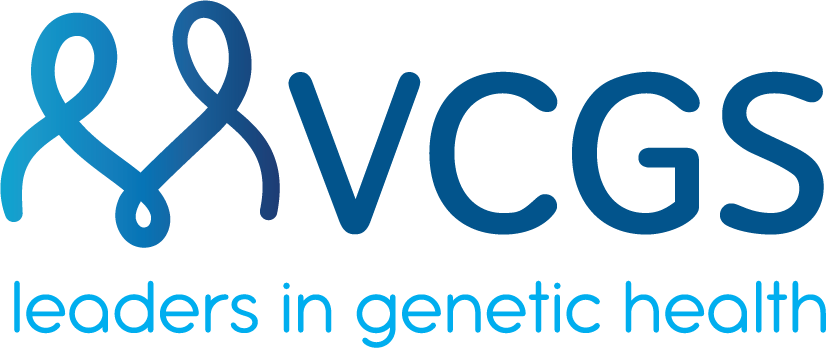
In 1988, while Australia celebrated its bicentenary, Dame Elisabeth Murdoch and Professor David Danks set their sights on the emerging role of genetics in public health when they opened the doors to the Victorian Clinical Genetics Services (VCGS). Having only recently co-founded Murdoch Children's Research Institute, Dame Elisabeth and Prof Danks shared extraordinary foresight. Together, they recognised the impact that genetics could have on child health and worked tirelessly to drive the evolving science in Australia.
Pivotal to this was the creation of VCGS as a specialist prenatal, childhood and adult genetics service. It is an Australian not-for-profit subsidiary of Murdoch Children's and one of the largest contributors driving genetic healthcare, research and policy in the country.
With investment from the Victorian Department of Health, VCGS has been able to apply the latest advances in genetic technology to improve diagnostic impact; helping sick children and their families in ways that were previously unimaginable.
VCGS Laboratory Director Dr Damien Bruno says the service has grown from testing for a limited range of known genetic conditions, to incorporating technology that can sequence all genes in the search for what's causing disease.
"Over the past five years we have seen extraordinary advances in research and technologies that have enabled us to completely transform the way we analyse and make sense of genomic data," Dr Bruno says.
"Using genomic information to inform a patient's diagnosis and clinical care is truly remarkable; it allows doctors to deliver healthcare tailored to the family's needs".
In its earliest days, VCGS took on the Newborn Bloodspot Screening program known as the heel prick or "Guthrie" test“ partnering with the Victorian State Government. Developed in the 1960s by Dr Robert Guthrie as a test for phenylketonuria, it now covers 25 different conditions. VCGS has screened more than two million newborns and saved many lives through quick diagnosis and treatment.
In addition to newborns, VCGS also began applying genetic technologies to prenatal testing, including first and second-trimester screening programs used to assess women at increased risk for conditions such as Down syndrome. More recently, VCGS began offering highly advanced genome-wide non-invasive prenatal testing (NIPT), which can detect a broad range of chromosome conditions in early pregnancy.
In the paediatric setting, VCGS also pioneered the implementation of single nucleotide polymorphism (SNP) microarrays. This technique, which uses a child's blood or saliva sample, has informed diagnosis and treatment for thousands of Australian families.
However, this life-saving genetic information can be complex and challenging for families. VCGS quickly recognised the importance of specially trained counsellors to act as translators between scientists, doctors and patients.
Employing its first official genetic counsellor in 1989, VCGS soon developed an in-house training program that became the foundation for the University of Melbourne's Master of Genetic Counselling.
Exponential growth in Murdoch Children's and VCGS' genetic knowledge base led to the development of POSSUM; a birth defect database used by researchers and clinicians globally to inform treatment and new discoveries.
VCGS Medical Director Professor Martin Delatycki describes POSSUM as "the single-most internationally recognisable output of VCGS."
VCGS has also led the way in reproductive carrier screening for conditions such as cystic fibrosis, spinal muscular atrophy and fragile X syndrome.
In its anniversary year, VCGS, through Murdoch Children's, was named one of three laboratories nationally to develop a comprehensive genetic testing and patient support model for the $20 million Mackenzie's Mission: a three-year pilot program that will screen 10,000 couples to identify their chance of having a child with a severe genetic condition.
What was once a manual, labour-intensive process, taking sometimes years to arrive at a result, can now scan an individual's entire DNA code in just a few days. The implications for swift diagnosis and clinical decision-making have been game-changing.
VCGS pioneered the implementation of exome sequencing into clinical healthcare, resulting in hundreds of answers for patients and families with previously undiagnosed conditions.
This has set the stage for Acute Care Genomics, which has brought incredible advances in technology and enables clinicians to get rapid findings about the cause of rare and complex genetic conditions, resulting in timely, targeted treatment for children.
Together with its key partners — Murdoch Children's, The Royal Children's Hospital, The Royal Children's Hospital Foundation, University of Melbourne, Australian Genomic Health Alliance, Melbourne Genomic Health Alliance and the Australian and Victorian Departments of Health — VCGS continues to stand as a world-leading, not-for-profit provider of cutting-edge genetic services.
Just as it began with a vision of the future, VCGS remains dedicated to delivering the benefits of genomics to acute care and standard clinical practice, so that every child and family can reap the benefits and live their healthiest possible life.
Mackenzie's Mission is the first project under the Federal Government's $500 million Genomics Health Futures Mission - part of the Australian Government's Medical Research Future Fund.




